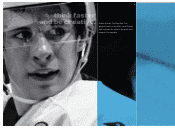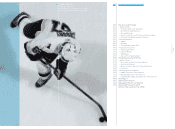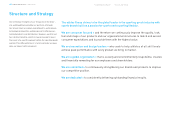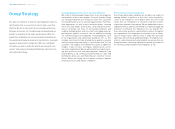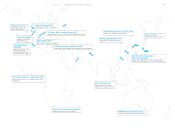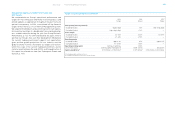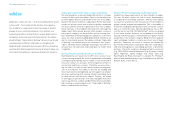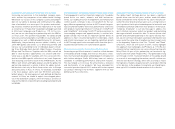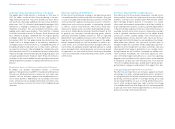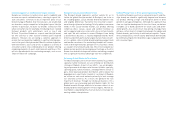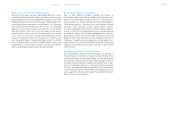Reebok 2006 Annual Report Download - page 54
Download and view the complete annual report
Please find page 54 of the 2006 Reebok annual report below. You can navigate through the pages in the report by either clicking on the pages listed below, or by using the keyword search tool below to find specific information within the annual report.› Structure and StrategyGroup Management Report ›
050 ANNUAL REPORT 2006 › adidas Group ›
M&A Activities Focus on Long-Term Value Creation Potential
We expect the majority of our Group’s medium-and long-term
growth to come from organic business. However, as part of
our commitment to ensuring sustainable profitable develop-
ment, as appropriate we also review external merger and
acquisition options that may provide additional commercial
and operational opportunities. Acquisitive growth focus is pri-
marily in two key areas: regional expansion and/or strength-
ening our Group’s positioning within a sports category. The
strategies of any potential acquisition candidate must corre-
spond with the Group’s long-term direction. We also scruti-
nize key financial metrics that must support value accretion.
Aligning the cost of capital to return on invested capital is a
core consideration in our decision-making process. We also
evaluate the potential impact on our free cash flow, assessing
the contribution potential from the target and any potential
financing implications.
Optimization of Non-Operating Components
Our Group also puts a high priority on the optimization of
non-operating components such as financial expenses and
taxes as these items strongly impact the Group’s bottom-line
development and therefore the Group’s free cash flow. Finan-
cial expenses are managed centrally by our Group Treasury
department (see Treasury, p. 85). The Group’s current and
future cash outflow for taxes is optimized globally by our
Group Taxes department.
Cost of Capital Key Metric to Measure Investment Potential
Creating value for our shareholders by earning a return on
invested capital above the costs of that capital is a guiding
principle of our Group strategy. We source our capital from
the equity and debt markets; therefore we have a responsibil-
ity that our return on that capital meets the expectations of
both equity shareholders and creditors. The adidas Group cal-
culates the cost of capital according to the debt/equity ratio,
utilizing a weighted average cost of capital (WACC) formula.
We then use this metric to calculate the required financial
returns of planned capital investments. The cost of equity is
computed utilizing the risk-free rate, market risk premium
and beta. The basis for the derivation of the cost of debt is the
risk-free rate, credit spread and average tax rate.
Structured Performance Measurement System
Our Group has established a far-reaching performance mea-
surement system utilizing a variety of measurement tools.
To measure the Group’s current sales and profitability devel-
opment, we monitor our annual budget on a monthly basis,
addressing shortfalls and identifying additional opportuni-
ties for our Group. Further, we monitor operating margin
developments at all brands on a monthly basis. If deviations
between actual and target numbers arise, we perform a
detailed analysis to identify and address the cause. In addi-
tion, we benchmark the Group and brand results with those of
our major competitors on a quarterly basis. We measure the
Group’s future development of the top line utilizing our order
backlog development which comprises the orders received
within a period of six to nine months in advance of the actual
sale and represents approximately 70% of future anticipated
revenues. Also increasingly important is the monitoring of
our own-retail activities and at-once business, which is not
included in the order book. We provide updates on these
developments as part of our quarterly reports (see Subse-
quent Events and Outlook, p. 106).


